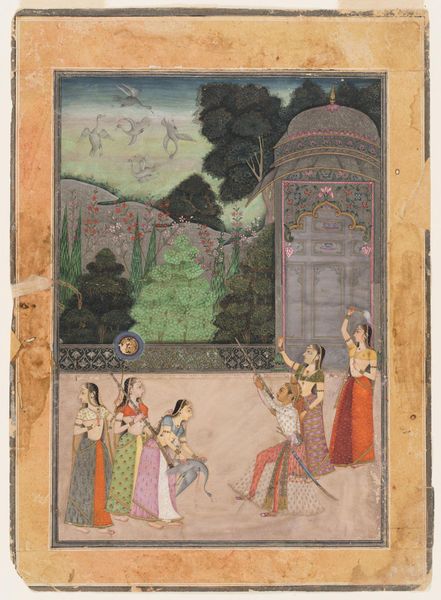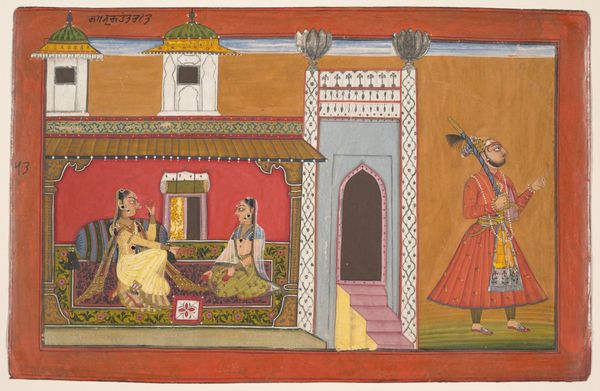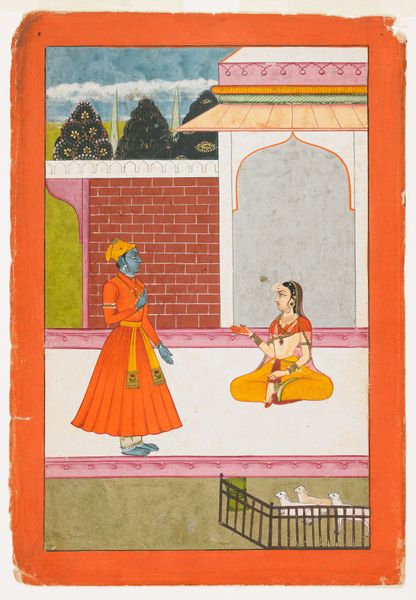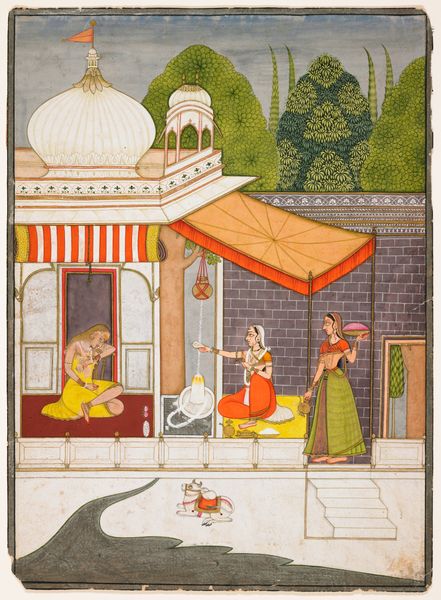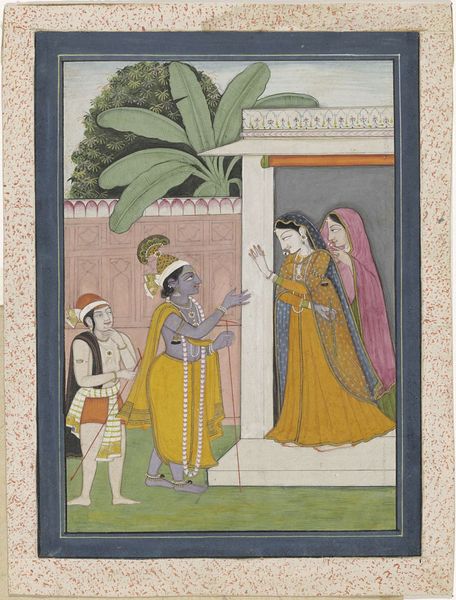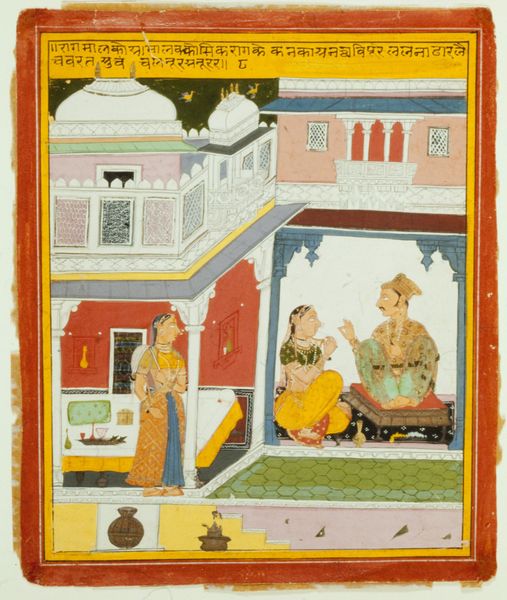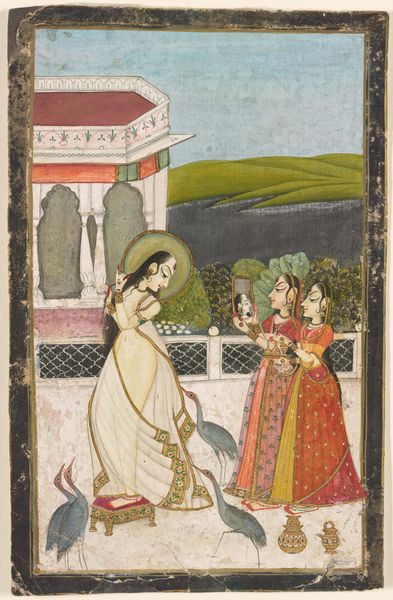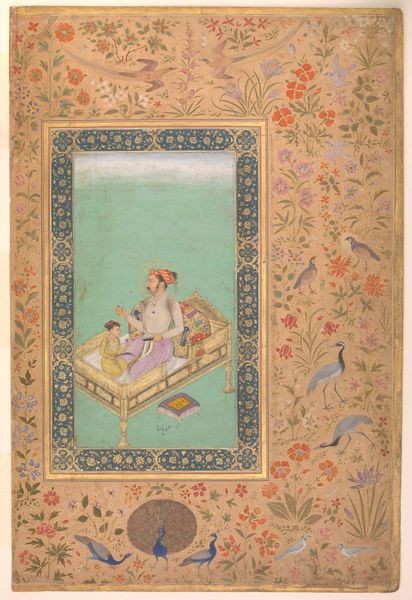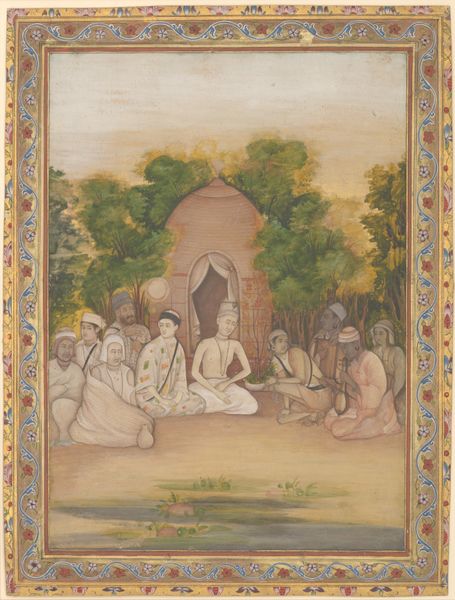
painting, watercolor
#
aged paper
#
toned paper
#
narrative-art
#
muted colour palette
#
painting
#
asian-art
#
landscape
#
figuration
#
watercolor
#
men
#
genre-painting
#
miniature
Dimensions: Image: 7 3/8 × 5 1/8 in. (18.7 × 13 cm) Sheet: 8 1/2 × 6 3/8 in. (21.6 × 16.2 cm)
Copyright: Public Domain
Curator: Let's turn our attention to this page from a Dispersed Rasikapriya, or Lover's Breviary. This watercolor painting, created around 1685 by the artist Nuruddin, offers us a glimpse into the world of Indian miniature painting. Editor: My first thought is… peaceful, strangely. The muted palette has a really calming effect, even with the narrative playing out across the composition. And look at the size! These miniatures are gems. Curator: Indeed. The Rasikapriya is a poem exploring the nuances of love and relationships, and these paintings served to visually interpret its verses. Notice how the scene is divided, almost like stages in a play? We see figures within the palace and in the landscape beyond, all within this compact space. The architecture gives insight into court life at the time. Editor: I like how they handle perspective, kind of flattening the space. And the colors, though faded with time, still vibrate. The artist emphasizes different planes instead, and your eye flits around from place to place trying to take everything in. What's happening, narratively? Curator: The blue-skinned figure is likely the god Krishna. The work interprets complex relationships—love, longing, and sometimes even betrayal within the framework of sacred and courtly love. The placement of the figures, their gestures and glances, all communicate specific emotions and plot points within the Rasikapriya poem. These weren't merely decorative but tools for engaging deeply with the poetry. Editor: Betrayal? Drama, even in miniature! There’s almost something…comic…about the guy kneeling on the hill there in pink! And the expressions, although stylized, still manage to convey feeling, though. It is beautiful how they use landscape here as an interior state, and vice versa. The entire composition feels deliberately staged, in a sense. Curator: Precisely! The politics and power structures of the time definitely informed the art. Commissioned by rulers and nobles, these artworks reflected not only their aesthetic preferences but also served to solidify their cultural and social status. They highlight an era's values. Editor: And it's interesting to think that these were held, turned over in the hand… almost like intimate objects, unlike large canvases demanding a dedicated gallery. Well, thanks to you, I am definitely feeling the love, longing, and well-staged drama a lot more deeply. Curator: My pleasure. Examining these paintings helps us realize that the beauty and artistry present transcends a purely aesthetic appreciation, revealing broader socio-cultural forces that contributed to its creation.
Comments
No comments
Be the first to comment and join the conversation on the ultimate creative platform.
